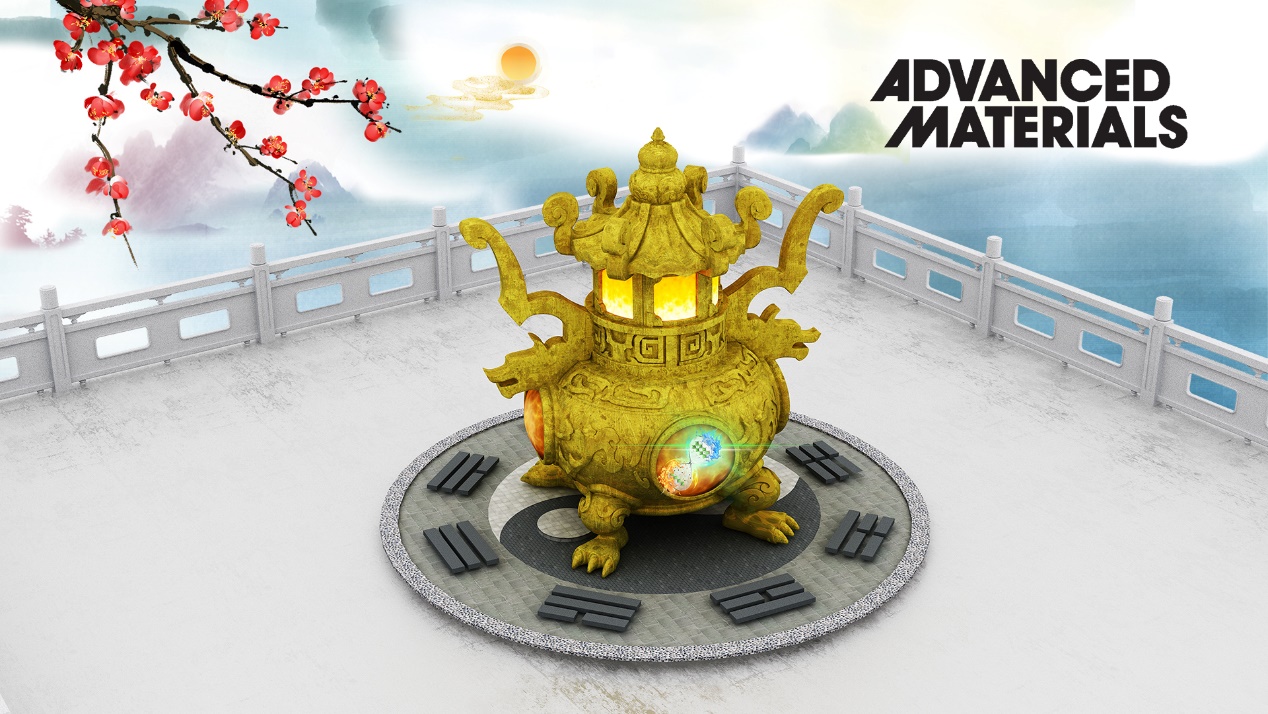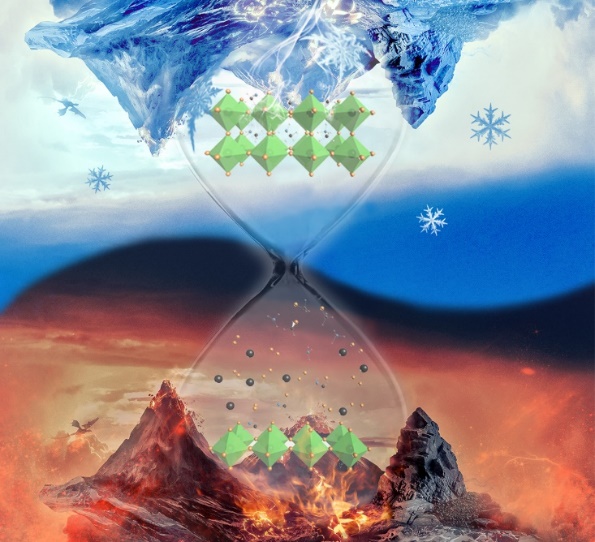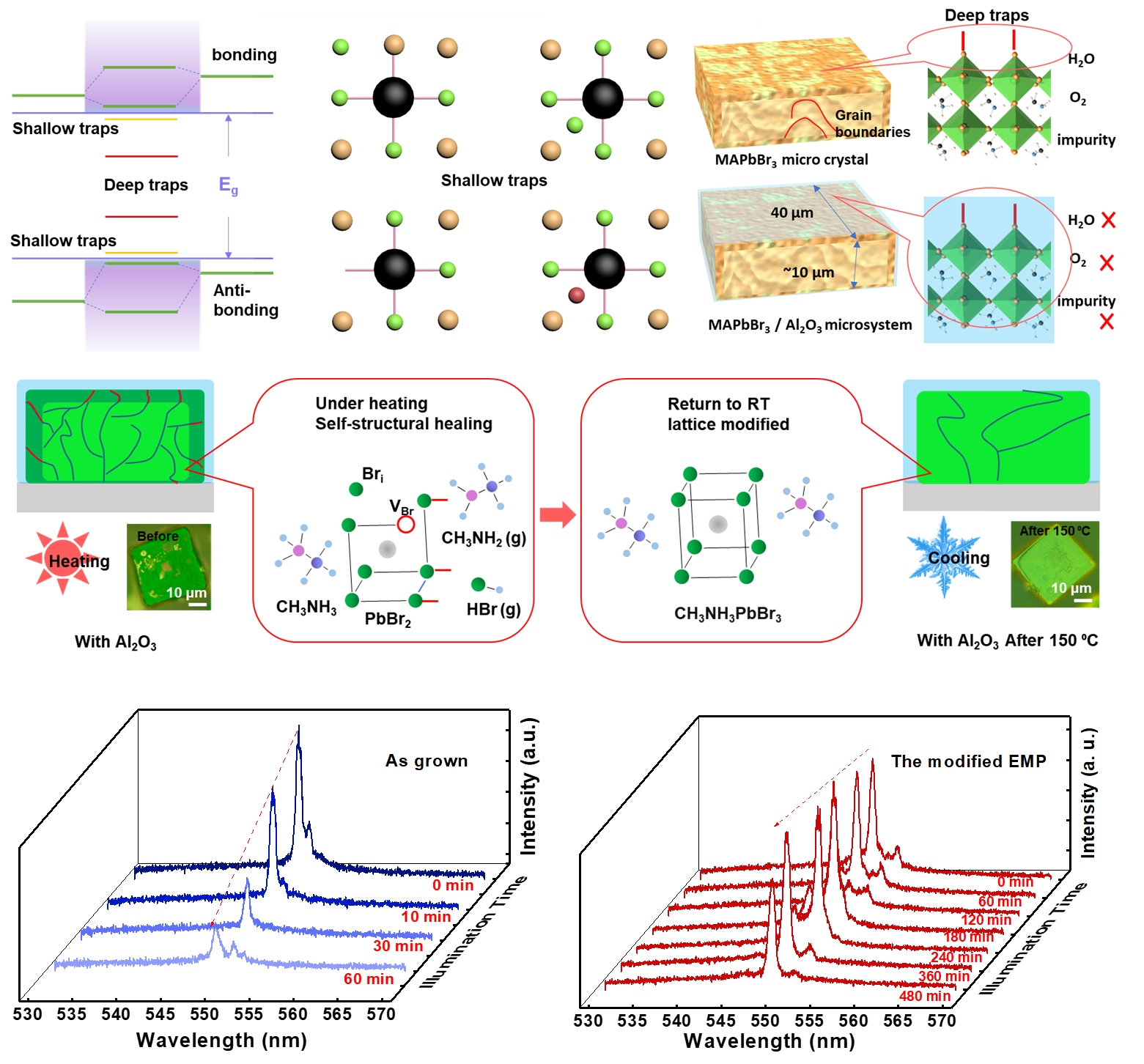Recently, Professor Rui Chen’s group from the Department of Electrical and Electronic Engineering at the Southern University of Science and Technology (SUSTech) published an article in the renowned journal Advanced Materials, entitled “Self-Structural Healing of Encapsulated Perovskite Microcrystals for Improved Optical and Thermal Stability,” which was also selected as the inside front cover.

The research by Professor Rui Chen’s group aims to reveal the effect of the intrinsic deep level trap states (DLTS) on the stability of structures and optical properties of perovskites. They found that DLTS has played a very important role in the stability of perovskite materials. The density of DLTS was reduced after annealing at 150 °C due to self-structural healing. Finally, the modified MAPbBr3 has shown stable emission and lasing stability for about two years.

Figure 1. The inside front cover of Advanced Materials
Perovskite materials and their optoelectronic devices have attracted intensive attention in recent years, and the performance of their devices has also been greatly improved. However, researchers gradually found that it is difficult to further enhance the performance of perovskite devices because of the poor stability. It had been found that defects have played a significant role in the stability of perovskite materials, especially the DLTS, which are caused by surface dangling bonds and grain boundaries. In this research, the organic-inorganic hybrid CH3NH3PbBr3 (MAPbBr3) perovskite microcrystal was encapsulated in a dense Al2O3 layer by atomic layer deposition (ALD) to form a microenvironment. When the thermal treatment temperature was higher than the MAPbBr3’s sublimation temperature (150°C), the material structure would decompose to form volatile CH3NH2 and HBr gases.

Figure 2. Mechanism of self-structural healing
It is exciting and surprising that this micron-level environment can be served as a high-vacuum growth chamber, where the perovskite components (CH3NH2 and HBr) are entirely retained when sublimated. The crystal structure would be re-grown under stress and the gravitational effect of hydrogen bonds, which results in the elimination of DLTS when it cools down to room temperature. Through optical measurement, it was found that during the re-growth process, the DLTS density decreases nearly an order of magnitude, which results in 4.5 times enhancement of light emission. In addition, under long-time irradiation (10h), the modified structure was also showing an enhanced emission by 14 times. Therefore, the modified MAPbBr3 has shown self-structural healing even under high temperature and long-time laser illumination. The modified structure showed high thermal stability and can maintain excellent optical and lasing stability for up to two years. This discovery provides a new idea and perspective for improving the stability of perovskite and will be of practical interest for perovskite device application.

Figure 3. Schematic diagram of DLTS and lasing stability
The first author of the article is Dr. Ruxue Li, a postdoctoral fellow in the research group (now Associate Professor in the School of Electrical and Information Engineering at Guangxi University of Science and Technology). Dr. Bobo Li from the College of New Materials and New Energy at Shenzhen Technology University (SZTU) and Dr. Xuan Fang from Changchun University of Science and Technology (CUST) are the co-first authors.
Graduate students Yueqing Shi and Xiu Liu also participated in this work. Professor Zhipeng Wei from the State Key Laboratory of High Power Semiconductor Lasers at CUST is the co-corresponding author. He has been engaged in research in the field of semiconductor lasers and detection for many years. He has vast knowledge and experience in material growth, such as molecular beam epitaxy (MBE) and ALD.
Recently, Professors Zhipeng Wei and Rui Chen have joint publications on the performance improvement and stability of perovskite-based lasers.
Related links:
Advanced Materials research paper:
https://doi.org/10.1002/adma.202100466
Inside front cover:
https://onlinelibrary.wiley.com/doi/10.1002/adma.202170161
Other publications on the stability of perovskite-based lasers:
https://doi.org/10.1039/c8nr07256f
Proofread ByAdrian Cremin, Yingying XIA
Photo By